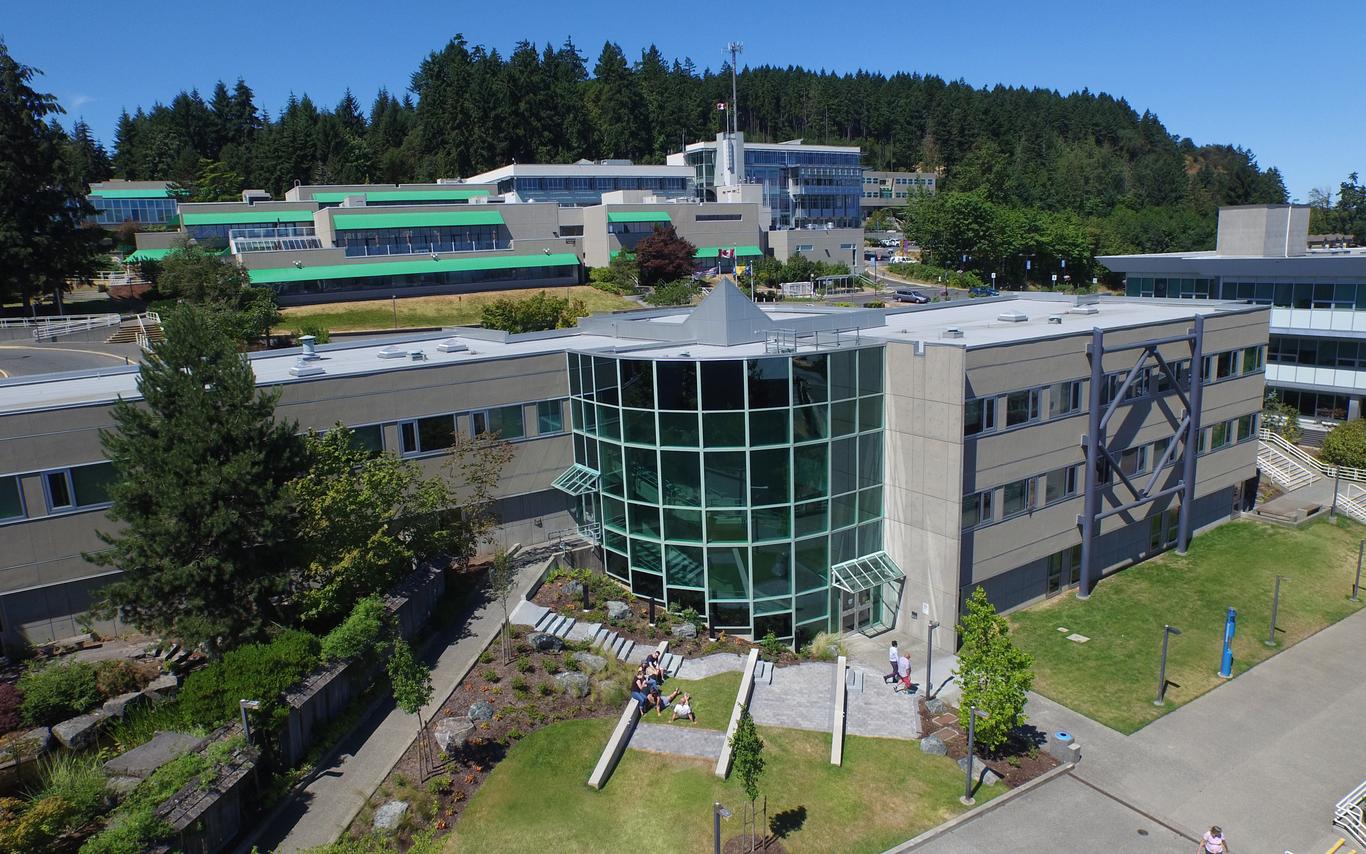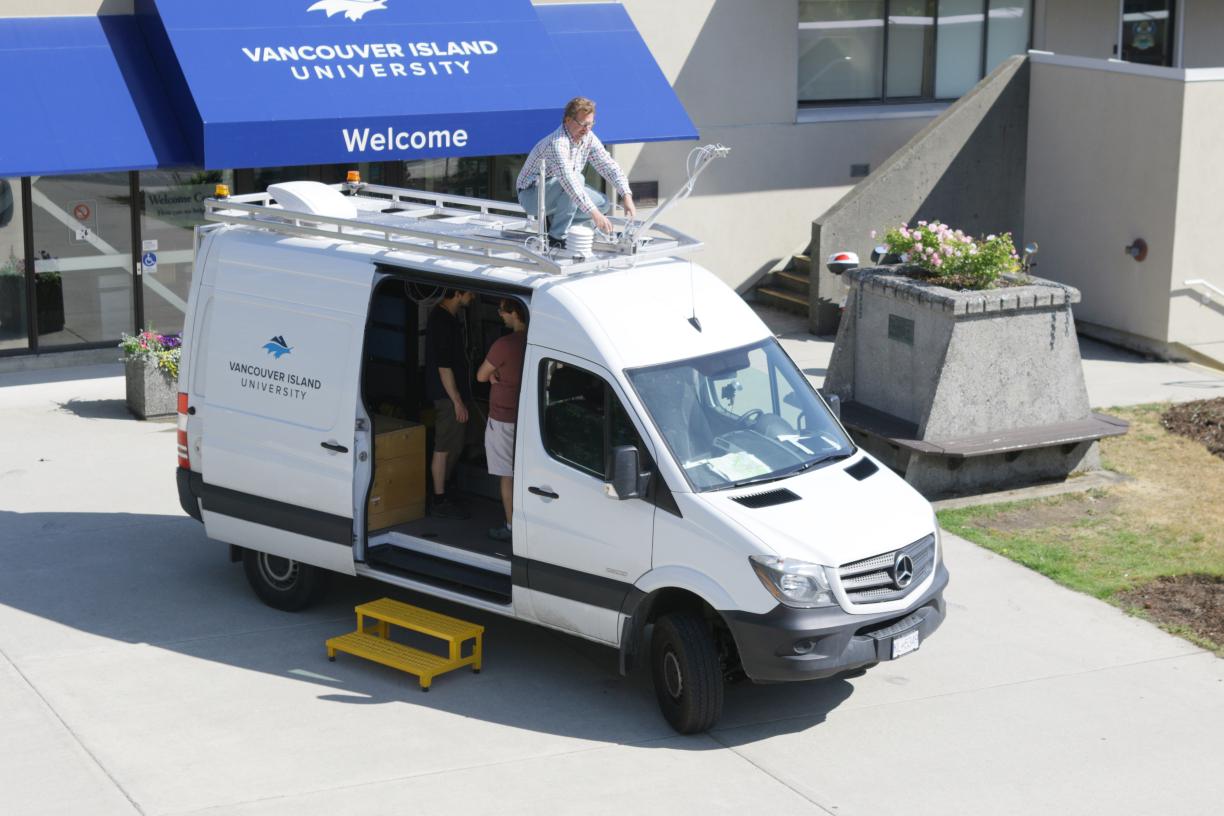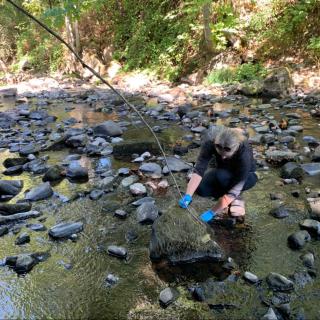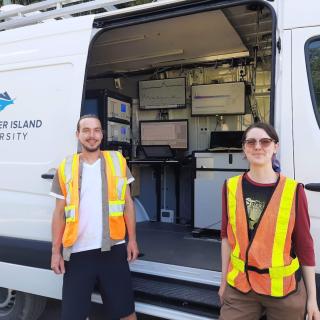Vancouver Island University (VIU) student researchers see a dramatic decrease in air pollution levels due to reduced car and plane traffic.
Restrictions imposed to help save lives during the COVID-19 pandemic have led to less people driving and flying, which has created a rare opportunity for Vancouver Island University (VIU) researchers and students to study the impacts of automobile and plane traffic on the environment.
“It’s impossible to do an experiment where you ask everyone in a neighbourhood or city to cut their driving by 75%, but that experiment is happening now,” says Dr. Erik Krogh, a VIU Chemistry professor and Co-Director of the Applied Environmental Research Laboratories (AERL).
Student researchers taking Krogh’s atmospheric environmental chemistry class discovered that there was a dramatic improvement in air quality levels around British Columbia when they compared BC Air Quality Data from the first two weeks of March to the second two weeks in 2020. Students also examined data from previous years in the comparison. They discovered that fine particulate matter and nitrogen dioxide, which can come from a variety of sources including vehicle emissions, decreased significantly.
“By the end of March, levels of these pollutants dropped by 30-60% in most areas,” says Krogh, adding that similar results have been observed elsewhere and can depend on local conditions and the composition of the transportation sector.
Before the pandemic, students in this class were working on group projects that involved collecting their own data, but needed to adapt their efforts because of physical distancing restrictions. Many students pivoted to an examination of publicly available air quality data from various locations across the province and the potential impacts on public health using the British Columbia Air Quality Health Index.
One of the students in the class, Annika Bouma, an alum who was completing her fourth year in a math and chemistry double minor at the time, chose to examine nitrogen dioxide levels at the Vancouver International Airport. Bouma says what she found most exciting about the project was interpreting the results, which included a decrease in nitrogen dioxide levels.
Bouma didn’t see a dramatic difference between March 2020 and 2019, but she discovered a 67% decrease in the average levels of nitrogen dioxide when comparing the first two weeks to the last two weeks of March 2020.
“I think that COVID-19 can tell us a lot about air quality improvements as there is so much less air travel and vehicle travel occurring due to social distancing,” she says. “With this reduction we could possibly see how this affects our air quality and use the information to help improve air quality in the future.”
Krogh says the research data allows scientists to assess how much air quality improves when vehicles are taken off the road.
“There’s a social and public health benefit to knowing that answer, whether it’s in terms of promoting electric vehicles, which don’t produce either particulate matter or nitrogen oxides, or public policy to fund public transit or pollution control measures,” he says.
Krogh says scientists around the globe have seen pollution levels dropping dramatically but noted that Nanaimo’s air quality is very good most of the time.
“People around the world are noticing for the first time how clean the air is. There are communities in Northern India that are seeing the Himalayas for the first time. Usually there is too much particulate matter that creates haze and poor visibility. I like to call this ‘2020 vision’ because it allows us to see what we have been missing,” he says.
Krogh and researchers from VIU’s AERL are also collecting air quality data of their own on the Nanaimo campus with the University’s Mobile Mass Spectrometry Facility, equipped to detect a range of air quality parameters including volatile organic compounds that are not routinely monitored but are known to play an important role. Researchers have been taking measurements since COVID-19 restrictions were put in place and Krogh says they will continue to collect readings throughout the summer to see the impacts on air quality as restrictions start to ease and people start travelling more.
Poor air quality is associated with poor health outcomes, including respiratory and cardiovascular disease. Improved air quality reduces stress on the health care system generally and has been “correlated with better COVID related health outcomes,” says Krogh.
-30-
MEDIA CONTACT:
Rachel Stern, Communications Officer, Vancouver Island University
C: 250.618.0373 l E: Rachel.Stern@viu.ca | T: @VIUNews





